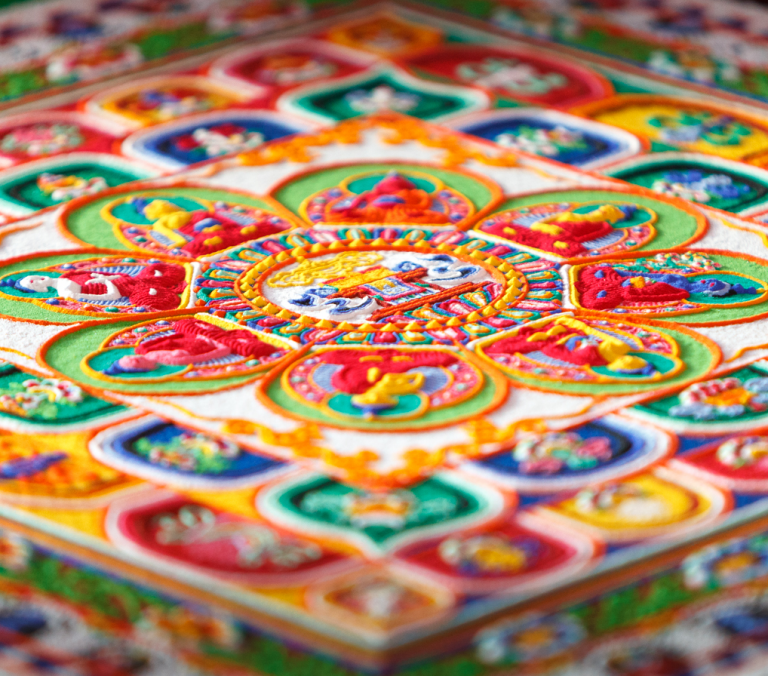Last month, a group of Tashi Lhunpo monks created a sand mandala at London’s Samye Dzong to commemorate its founder, Choje Akong Tulku Rinpoche, who was killed in China on October 8th, 2013.
Of all the artistic traditions of tantric Buddhism, that of painting with colored sand is one of the most exquisite. The mandala represents the celestial mansion or abode of a principal deity or deities, surrounded by their retinues, and representing the path and fruition of the particular cycle of practices.
To make a sand mandala, millions of grains of sand are painstakingly laid into place in an intricate design over a period of several days using hollow tubes called chagpurs. The material used is ground marble dust—but in ancient times powdered precious and semi-precious stones were also used. The monks will be creating a Medicine Buddha Mandala.
A total of eight monks constructed the mandala over a period of five days. The exhibition began with a short dedication prayer, and upon completion, the mandala was dismantled in a moving ceremony in which the sand was swept to the center of the table, symbolizing the impermanence of all things. A small amount of sand was be poured into the Thames.
For details on the life and murder of Akong Rinpoche, read our blog article here.
To view the entire gallery, visit the Darshana Photo Art page.
Further Reading: Himalayan Buddhist Art 101: Sacred Geometry, Part 1 | Himalayan Buddhist Art 101: Sacred Geometry, Part 2
Thank you for subscribing to Tricycle! As a nonprofit, we depend on readers like you to keep Buddhist teachings and practices widely available.
